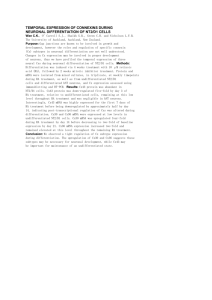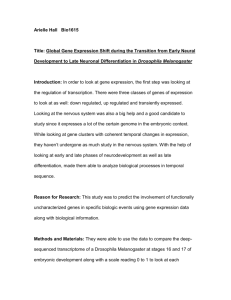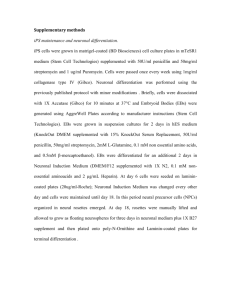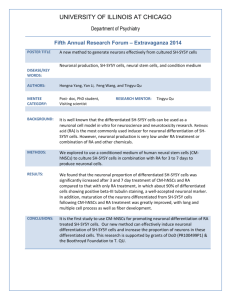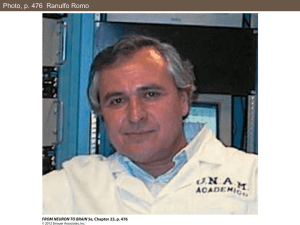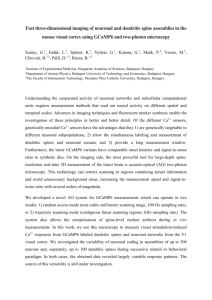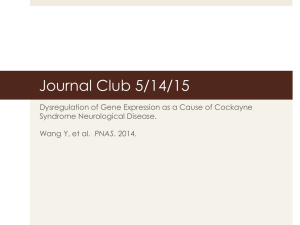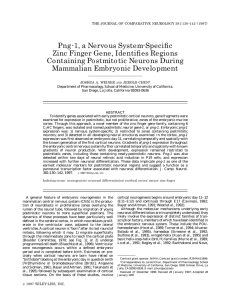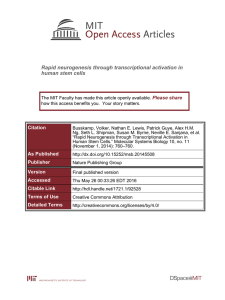Final Report - TOPONEURONAL
advertisement
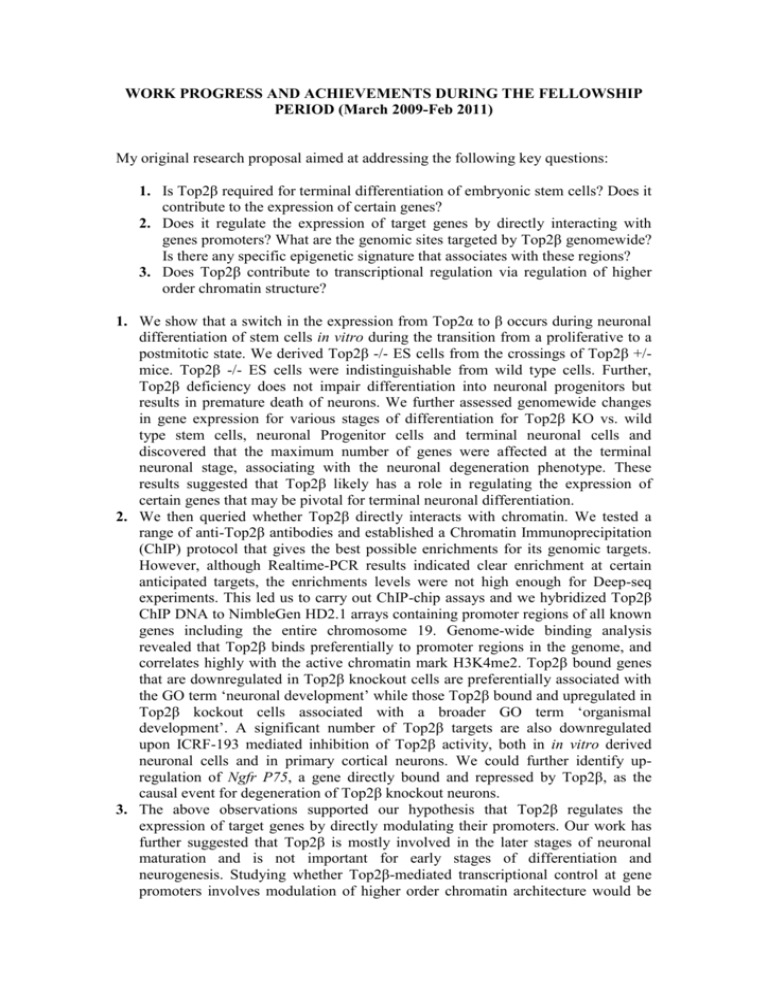
WORK PROGRESS AND ACHIEVEMENTS DURING THE FELLOWSHIP PERIOD (March 2009-Feb 2011) My original research proposal aimed at addressing the following key questions: 1. Is Top2β required for terminal differentiation of embryonic stem cells? Does it contribute to the expression of certain genes? 2. Does it regulate the expression of target genes by directly interacting with genes promoters? What are the genomic sites targeted by Top2β genomewide? Is there any specific epigenetic signature that associates with these regions? 3. Does Top2β contribute to transcriptional regulation via regulation of higher order chromatin structure? 1. We show that a switch in the expression from Top2α to β occurs during neuronal differentiation of stem cells in vitro during the transition from a proliferative to a postmitotic state. We derived Top2β -/- ES cells from the crossings of Top2β +/mice. Top2β -/- ES cells were indistinguishable from wild type cells. Further, Top2β deficiency does not impair differentiation into neuronal progenitors but results in premature death of neurons. We further assessed genomewide changes in gene expression for various stages of differentiation for Top2β KO vs. wild type stem cells, neuronal Progenitor cells and terminal neuronal cells and discovered that the maximum number of genes were affected at the terminal neuronal stage, associating with the neuronal degeneration phenotype. These results suggested that Top2β likely has a role in regulating the expression of certain genes that may be pivotal for terminal neuronal differentiation. 2. We then queried whether Top2β directly interacts with chromatin. We tested a range of anti-Top2β antibodies and established a Chromatin Immunoprecipitation (ChIP) protocol that gives the best possible enrichments for its genomic targets. However, although Realtime-PCR results indicated clear enrichment at certain anticipated targets, the enrichments levels were not high enough for Deep-seq experiments. This led us to carry out ChIP-chip assays and we hybridized Top2β ChIP DNA to NimbleGen HD2.1 arrays containing promoter regions of all known genes including the entire chromosome 19. Genome-wide binding analysis revealed that Top2β binds preferentially to promoter regions in the genome, and correlates highly with the active chromatin mark H3K4me2. Top2β bound genes that are downregulated in Top2β knockout cells are preferentially associated with the GO term ‘neuronal development’ while those Top2β bound and upregulated in Top2β kockout cells associated with a broader GO term ‘organismal development’. A significant number of Top2β targets are also downregulated upon ICRF-193 mediated inhibition of Top2β activity, both in in vitro derived neuronal cells and in primary cortical neurons. We could further identify upregulation of Ngfr P75, a gene directly bound and repressed by Top2β, as the causal event for degeneration of Top2β knockout neurons. 3. The above observations supported our hypothesis that Top2β regulates the expression of target genes by directly modulating their promoters. Our work has further suggested that Top2β is mostly involved in the later stages of neuronal maturation and is not important for early stages of differentiation and neurogenesis. Studying whether Top2β-mediated transcriptional control at gene promoters involves modulation of higher order chromatin architecture would be very interesting. However, due to challenging nature of the techniques involved and material source (neurons), this is not yet done. However, we have been able to show that upregulation of Ngfr P75, a gene bound and repressed by Top2β, mediates the degeneration of Top2β knockout neurons. Overall, our findings uncover genomewide binding sites for Top2β, thereby providing new insights into the regulatory function for Topoisomerases in postmitotic cells. We put forth a model whereby Top2β occupies active regulatory regions in the genome where its catalytically activity participates in gene regulation. During my fellowship, I have had the opportunity to present my work at various meetings such as: - Epigenome Network of Excellence meeting, Edinburgh, UK, July 1-4, 2009 -Wellcome Trust Signaling to Chromatin 2010 meeting, Cambridge, UK September 7-10, 2010 - FASEB meeting on Chromatin and Transcription, Aspen, Colorado, USA July 12-17, 2009 - International Conference on Stem cells, Apoptosis and Cancer in Pune, India, 11-15 December, 2010 This fellowship has fully supported the registration, travel and other associated expenses. Furthermore, the awarded money was also useful in buying lab reagents related to the proposed project. We have recently submitted our work for publication in the peer-reviewed journal Nature Cell Biology under the title "Topoisomerase IIbeta acts on H3K4 methylated promoters in postmitotic neurons to regulate their differentiation and survival". During the duration of the fellowship, I also contributed towards several other studies, especially the study of chromatin crosstalk of MAP kinases and dynamics of insulator protein CTCF during stem cell differentiation. These studies are either being prepared for submission or reviewed in some top rank journals. Two of such studies will be available online very soon: Genomic prevalence of heterochromatin and transcription do not discriminate pluripotent from terminally differentiated cells Lienert F, Mohn F, Tiwari VK, Baubec T, Gaidatzis D, Stadler MB and Schübeler D Accepted in PLoS Genetics Dynamics and Determinants of Genome Accessibility Bell O, Tiwari VK, Thomä NH and Schübeler D Invited review in Nature Reviews Genetics I have recently been offered a group leader position in many prestigious institutes across Europe and I aim to partly continue studying the mechanism of Top2β mediated transcriptional regulation once I have established my own group.

